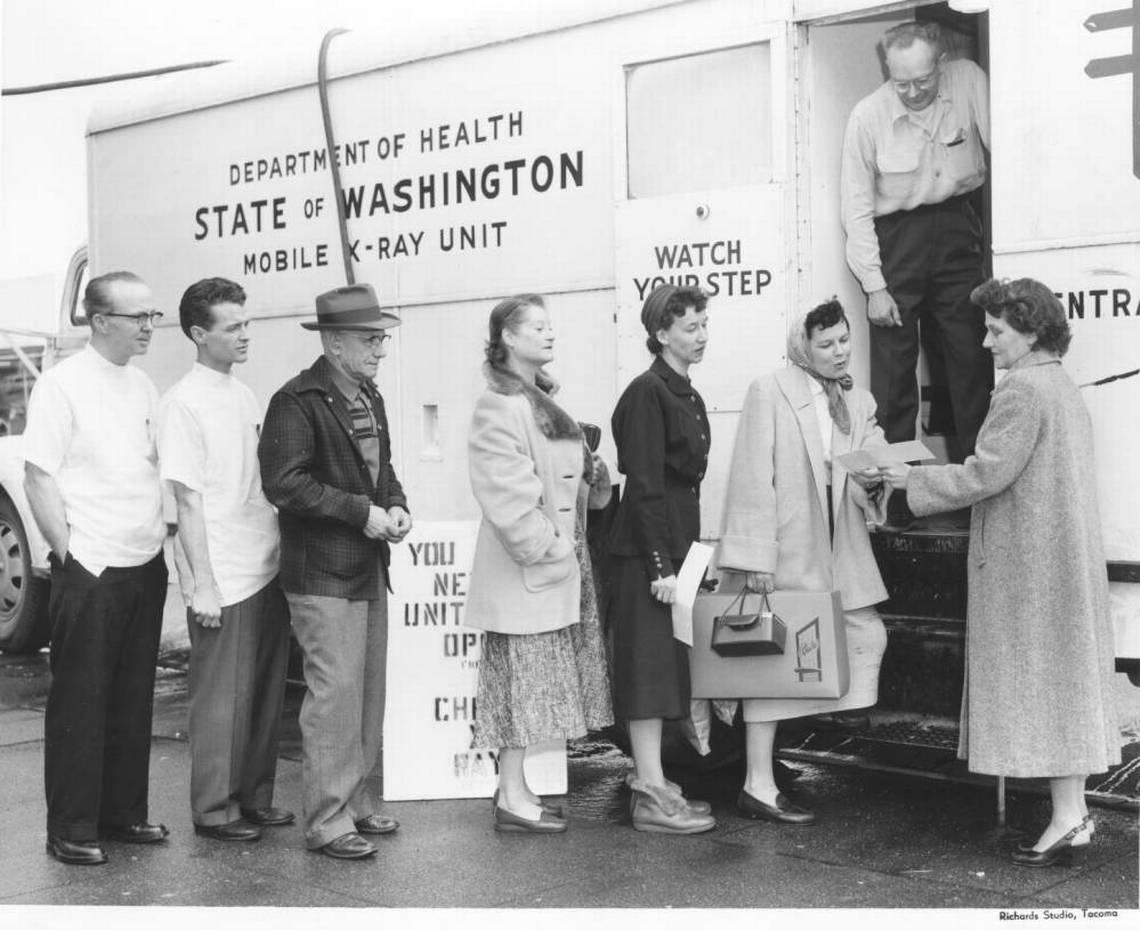Tuberculosis is dangerous and contagious. Here’s how far government can go to contain it
Before antibiotics, tuberculosis in the United States provided a traumatic and often fatal future for those diagnosed with the highly contagious, airborne disease.
The PBS American Experience documentary, “The Forgotten Plague,” was released in 2015. It noted, “By the dawn of the 19th century, tuberculosis —or consumption — had killed one in seven of all people (who) had ever lived.”
Even today, missed dosing of medication raises concerns of drug-resistant strains and poor outcomes among those infected.
As a result, strict patient-monitoring laws have long been in place on a national scale.
This week, the Tacoma-Pierce County Health Department announced it was monitoring an active case of TB in a Tacoma patient who as of Monday had declined medical treatment.
Treatment typically involves daily rounds of antibiotics for up to nine months. In most active cases, local health officials directly oversee therapy to ensure daily doses are taken.
If someone refuses or skips participation, health departments have the legal authority to obtain a court order to ensure patient isolation to safeguard the population from a TB outbreak.
TB monitoring is not only codified in Washington state law, the disease has its own law manual from the state Department of Health.
That manual notes, “A local health officer shall make reasonable efforts to obtain voluntary compliance with requests for examination, testing, and treatment prior to initiating the procedures for involuntary detention.”
TPCHD on Monday said it was working with the patient’s family to help persuade the patient to accept treatment, and it has rarely had to seek legal recourse for compliance.
Nigel Turner, division director of Communicable Disease Control for TPCHD, told FOX 13-TV on Monday that the department has only had to pursue legal avenues to gain patient compliance three times in 20 years.
On a national scale, the Centers for Disease Control and Prevention has “suggested provisions for state tuberculosis prevention and control laws.”
It notes, “Emergency detention laws provide public health officials with legal authority to swiftly take public health action to detain a person with TB who is reasonably believed to be a threat to the public’s health.”
Isolating infected patients has long been a standard of care, according to a history of quarantine measures published by the International Encyclopedia of Public Health in 2008.
“In the absence of effective vaccines and drugs, quarantine, implemented in its broadest aspects, once again proved to be, in the case of tuberculosis in the course of the twentieth century, one of the most useful health interventions for such a widely disseminated disease,” the report said.
The historical report also noted that “the fundamental clinical, epidemiological, and epistemological model of TB quarantine has not lost its formative impact and operative functionality.” It added that was primarily “because TB, a disease that seemed to have almost disappeared in the Western world in the 1960s and 1970s, has again emerged significantly in the last few decades.”

In Tacoma, mobile X-ray units were used to help identify and diagnose patients in the 1940s-50s, along with sanatoriums locally and nationwide to help isolate and treat more serious patients. The last U.S. TB sanatorium closed in 2012 in Florida.
TB elimination programs have sought to eradicate the disease in the United States, with one modeling report estimating “TB may be eliminated in US-born but not non–US-born persons by 2100.”
The report noted, “TB elimination in the United States remains a distant goal; however, strengthening TB prevention and treatment could produce important health benefits.”
